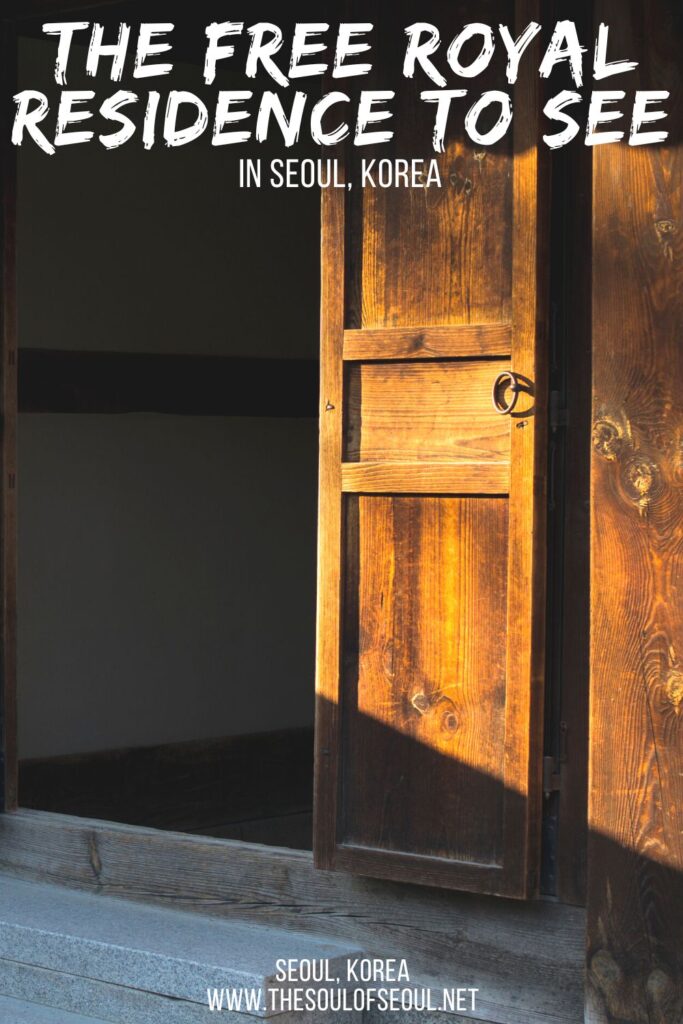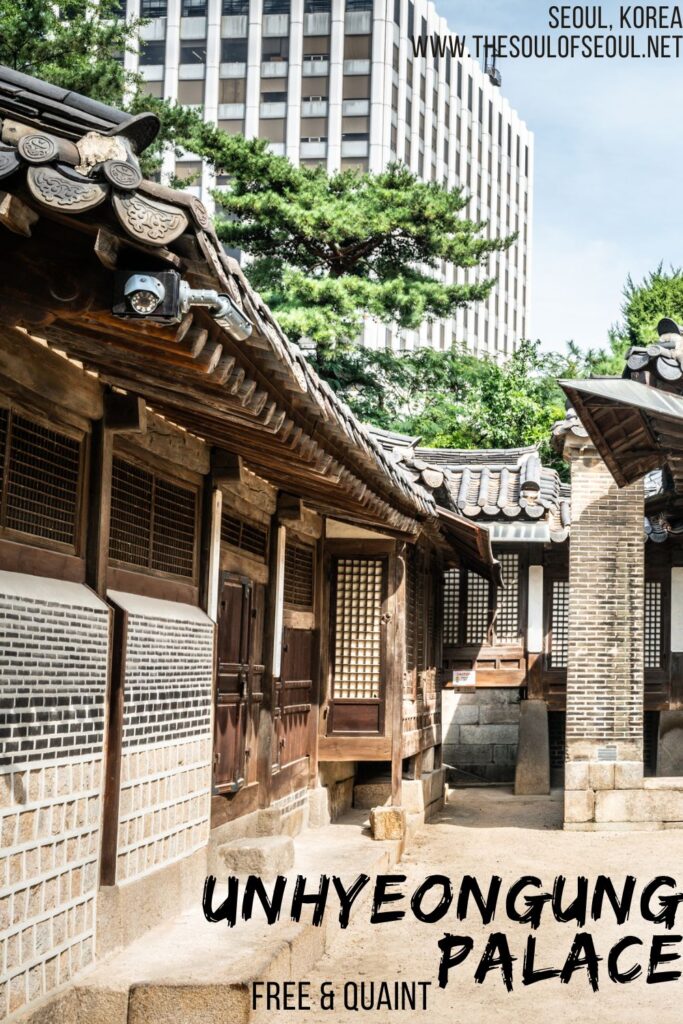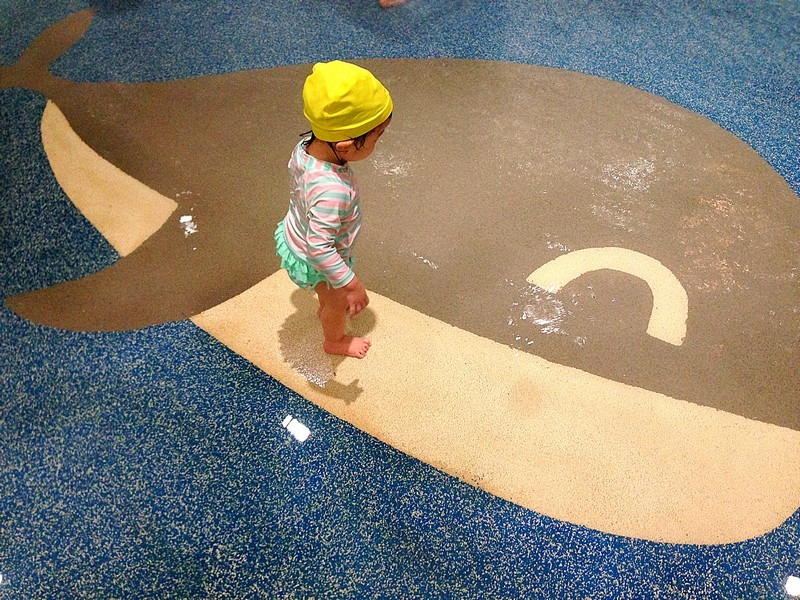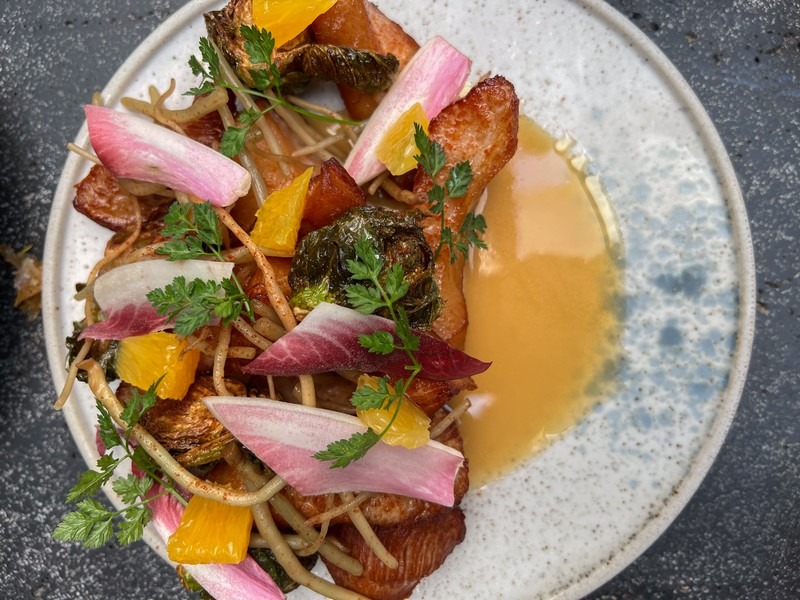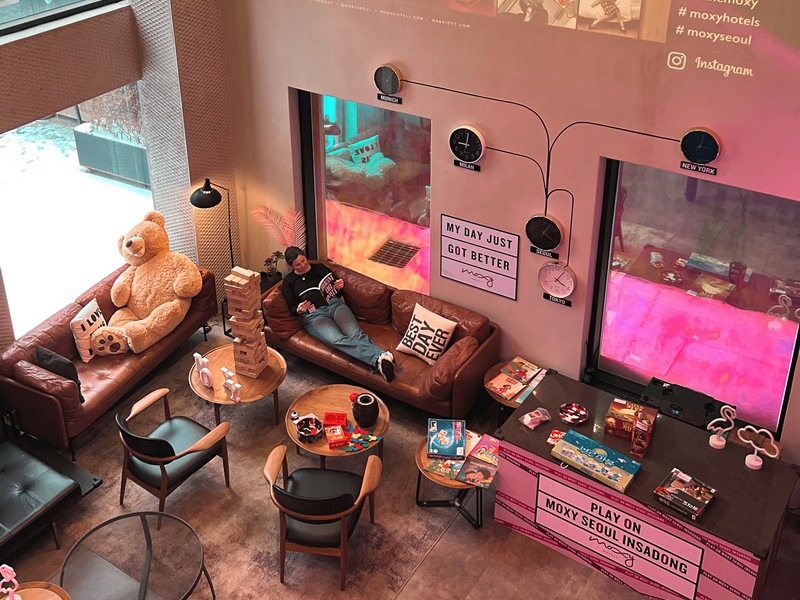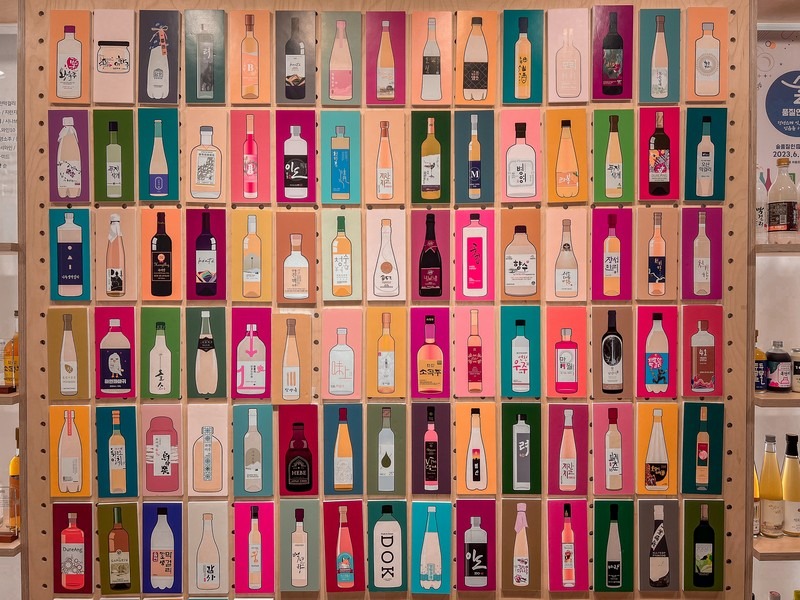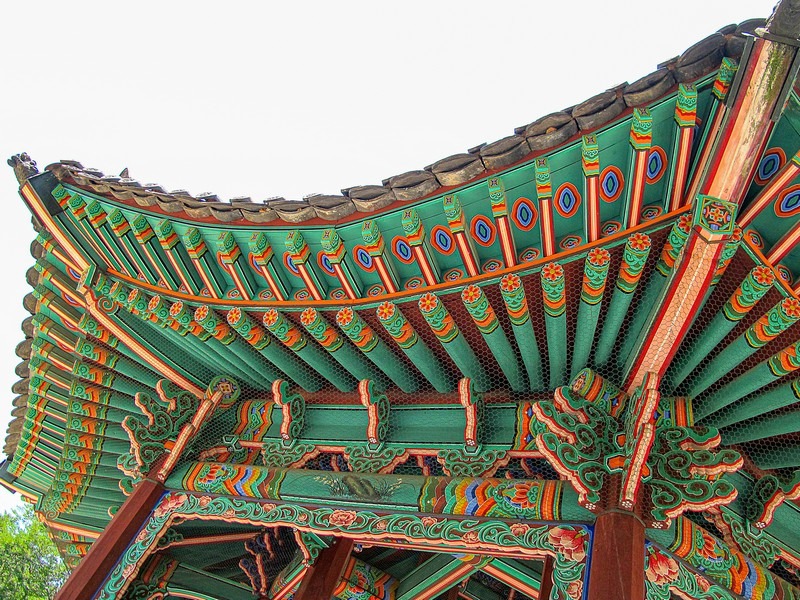Unhyeongung Palace: Perfect For Traditional Photos In Seoul
Last Updated on April 4, 2024
Unhyeongung Palace or Royal Residence (운현궁) sits quietly along the road just south of the touristy and popular Bukchon Hanok Village. This quaint and more rustic collection of historic Hanoks is easily accessible and if you want beautiful photos with Hanok buildings sans crowds, you should definitely visit Unyeongung Royal Residence.
With five palaces in Seoul to choose from when visiting the capital of South Korea, it’s easy to head to the biggest and grandest of them all, Gyeongbukgung Palace, and call it a day. I often recommend the palace to tourists saying that if they’ve only a short time, it is a must see. That isn’t to say that the other four palaces and royal residences shouldn’t be seen though, there are reasons and seasons for each.
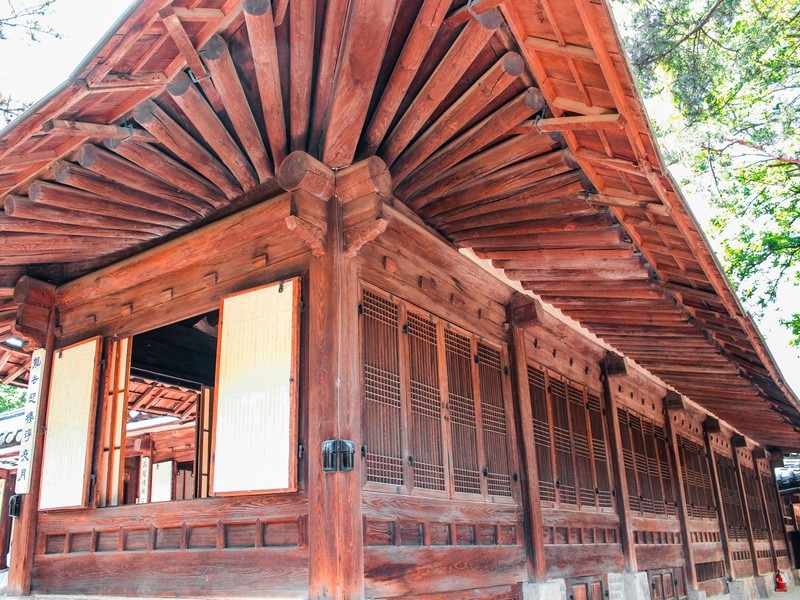
Take beautiful traditional photos at Unhyeongung Palace in Seoul:
(This page contains affiliate links. That means if you click on them and purchase something, I will get a percentage of the transaction at no cost to you.)
How To Get There
Address: 464 Samil-daero, Jongno-gu, Seoul (서울특별시 종로구 삼일대로 464)
Directions: Go to Anguk station, exit 4. Walk straight, it’s on the left just 100 meters down.
Basic Info
Hours: November ~ March: 9:00am ~ 6:00pm; April ~ October: 9:00am ~ 7:00pm
Days: Closed Mondays unless Monday is a holiday, then it is open and closed the following Tuesday.
Admission: Free
Amenities: restrooms, baby strollers and wheelchair rental available for free, audio guide/interpretation services
Information available in English, Japanese, and Chinese on audio guide:
– Operating hours: Summer 10:00-18:00 / Winter 10:00-17:00
– Rental fee: 1,100 won
Website: www.unhyeongung.or.kr
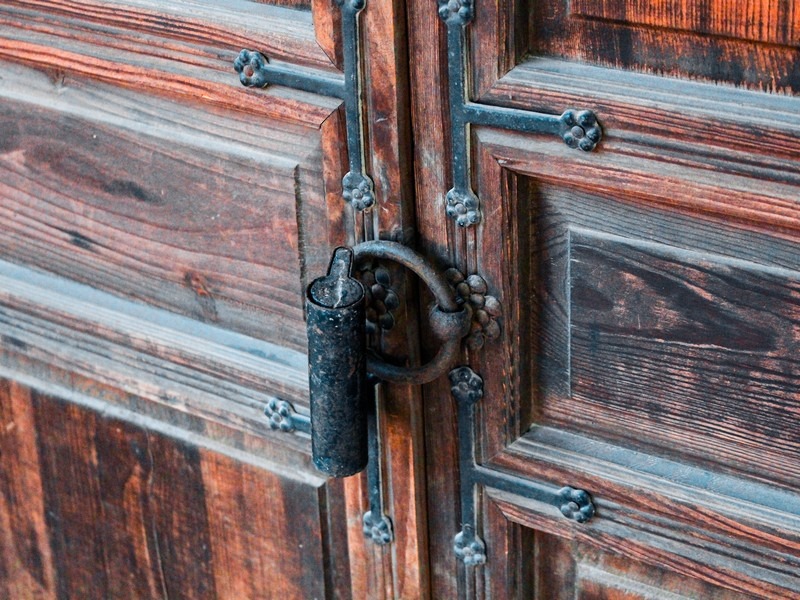
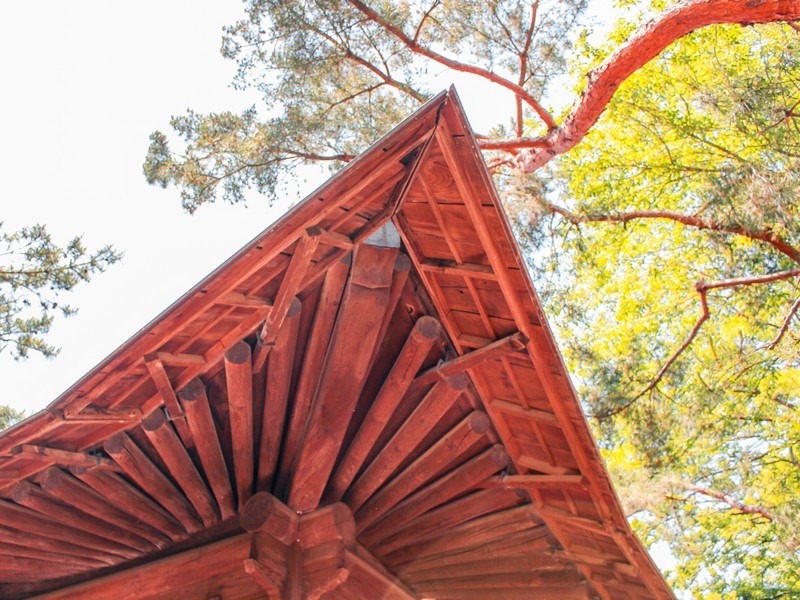
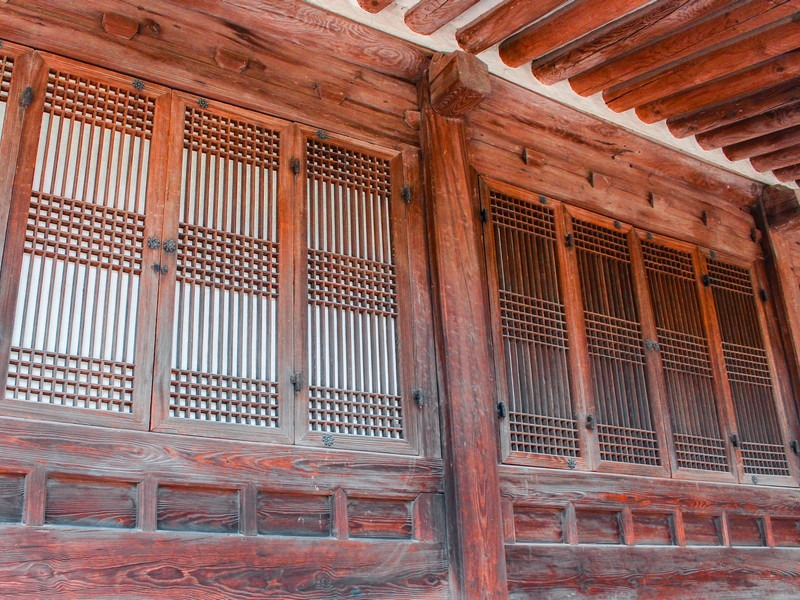
The History
Unhyeongung Royal Residence stands out from the other palaces in Seoul as it’s unadorned or painted like the other royal palaces. But, it also has a unique history. Unhyeongung Royal Residence was the residence of King Gojong, the 26th king of the Joseon dynasty. At the time though, it was a jamjeo (잠저), or a temporary place for the future king of Korea to reside as he was quite young.
The information explains that this residence was owned by Gojong’s father, Regent Heungseon Daewongun (흥선대원군) and he ruled over the country from here for ten years after he took control in place of his son.
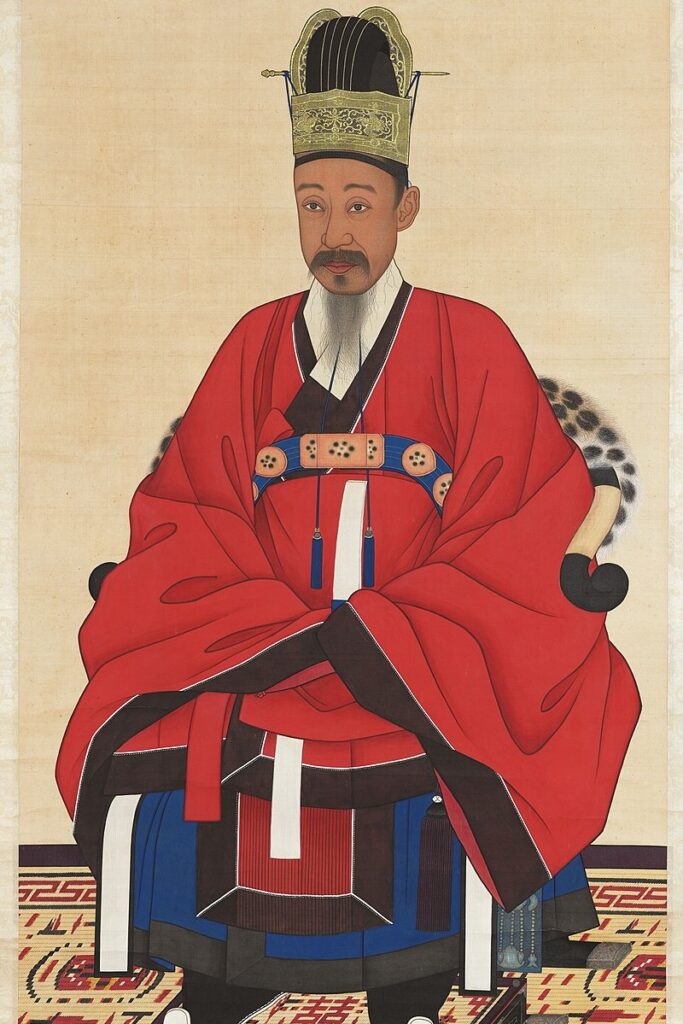
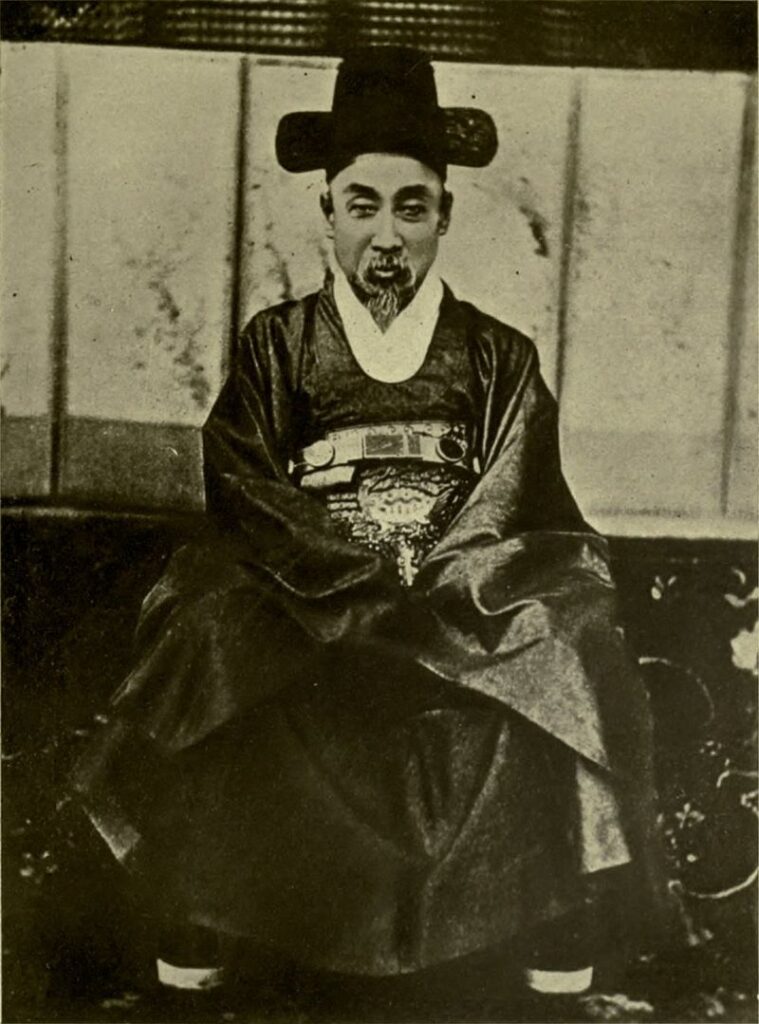
Daewongun didn’t have much power growing up though he was related to the royal family and was seen as fairly insignificant until his son was chosen to be the next king of Korea. It was at that point, as his son was too young, that he was able to step into the seat of power for ten years from 1864 until 1874. Ultimately, he was able to push through several reforms which promoted the isolation of Korea. He was against treaties, trade, Catholics, the West, and Japan.
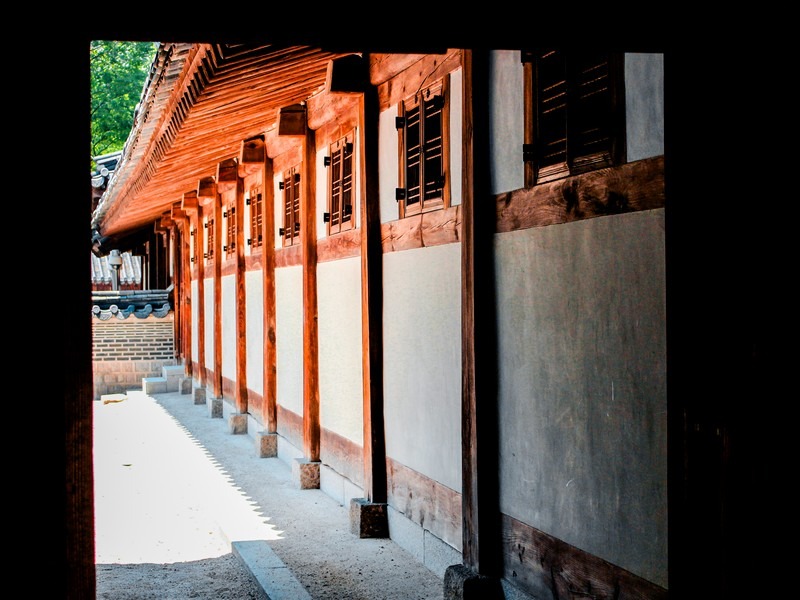
Most of his early career consisted of ceremonial duties but once he was in control, he wanted to crush any groups that threatened the sovereignty of the king and taxed the aristocracy to protect his current social status. His reforms were meant to reform the government and strengthen central control, but it could also be said that it was more or less to keep himself in the seat of power.
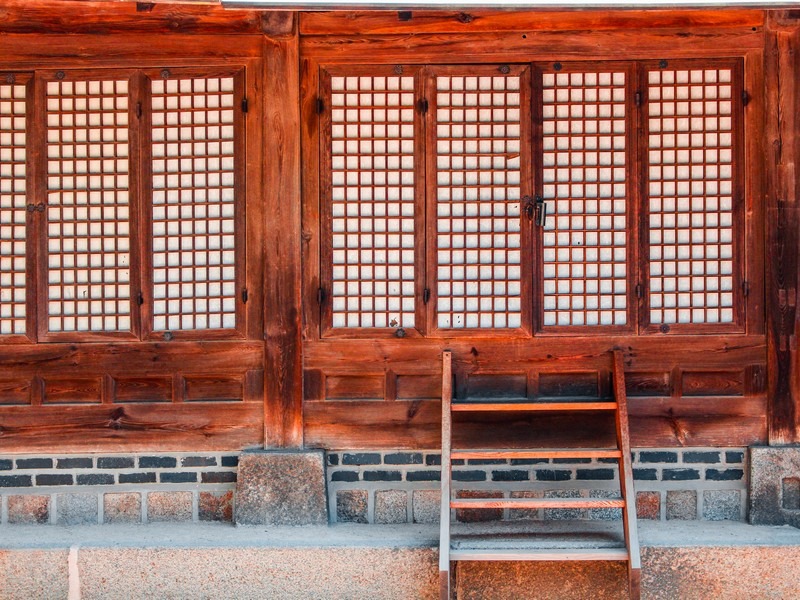
Once King Gojong came of age in 1874 and officially took complete responsibility in his role as ruler, he forced Daewongun into retirement. However, Daewongun wasn’t quite finished ruling and for a brief time took power back in 1882 after a coup against the king. Japanese and Chinese forces entered Korea to put down the rebellion and Daewongun was arrested for showing disrespect to the king though and was escorted to Tianjin, China by 100 Chinese soldiers.
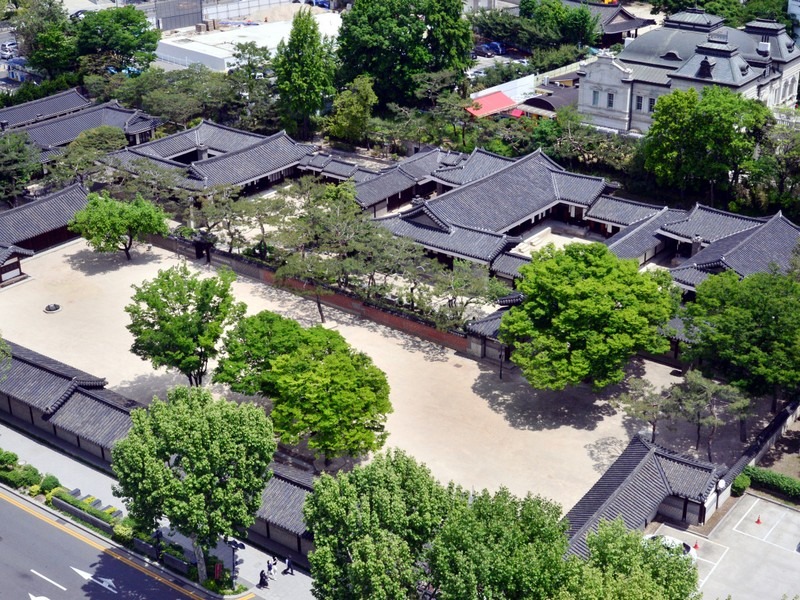
Daewongun was returned to Korea in 1885, despite protests from the queen, and was put under house arrest here at Unyeongung immediately to limit his power upon his return. He didn’t sit quietly by. This time, he attempted to overthrow the king by helping his grandson Yi Jun Yong, the king’s cousin. Oh if Unhyeongung could speak. The tales of rebellion, colluding, and power it would share.
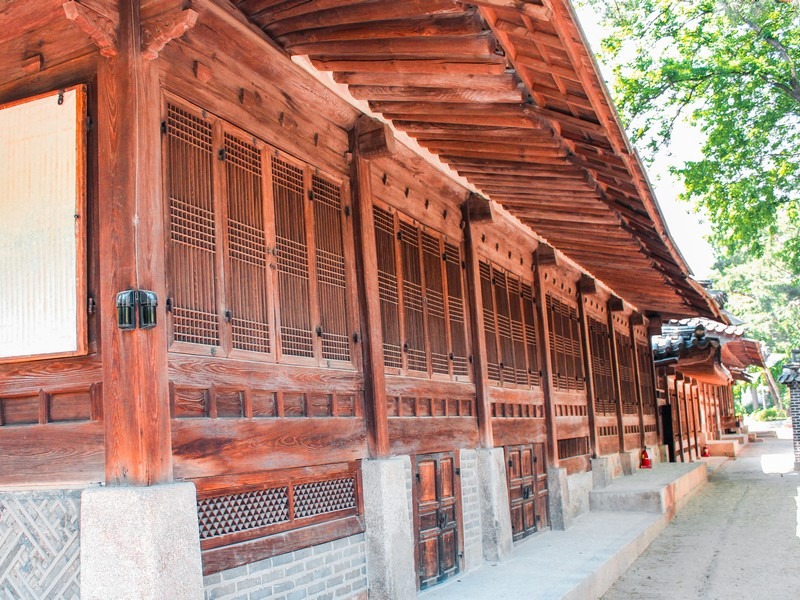
The Architecture
There is a folk song about this palace that says it had the feng-shui energy to create a king. The building was originally midway between Changdeokgung Palace and Gyeongbokgung Palace. At it’s largest, it had a hundred meter wall and four large gates where Duksung Women’s University is today.
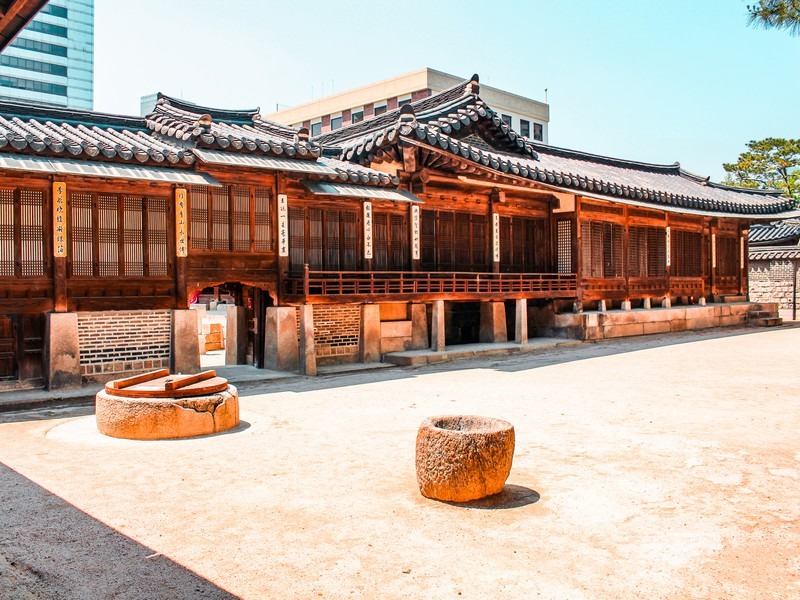
This palace is more akin to an inner palace as it is quite small now though what you see today is even smaller than it was in the beginning due to a portion of it being sold off after the Korean War. In fact, the grounds of the palace were taken in 1912 during the Japanese colonization period and ownership wasn’t returned to the descendants of Daewongun until 1948.
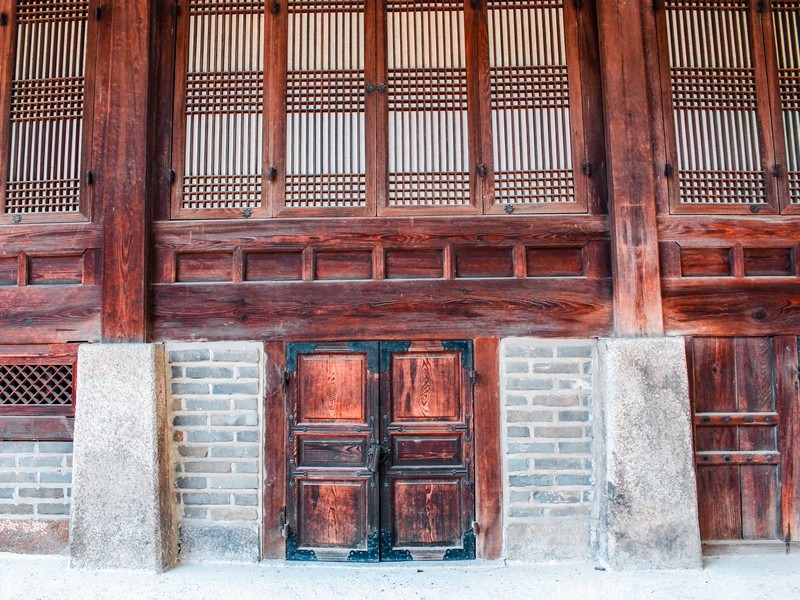
At that time, a legal dispute between Daewongun’s descendants and the Korean government took place about who should own the property. Ultimately the descendants won and kept the property until 1991 when they decided maintenance and management was too difficult. Today, the City of Seoul owns the land and renovated the palace to what you see today.
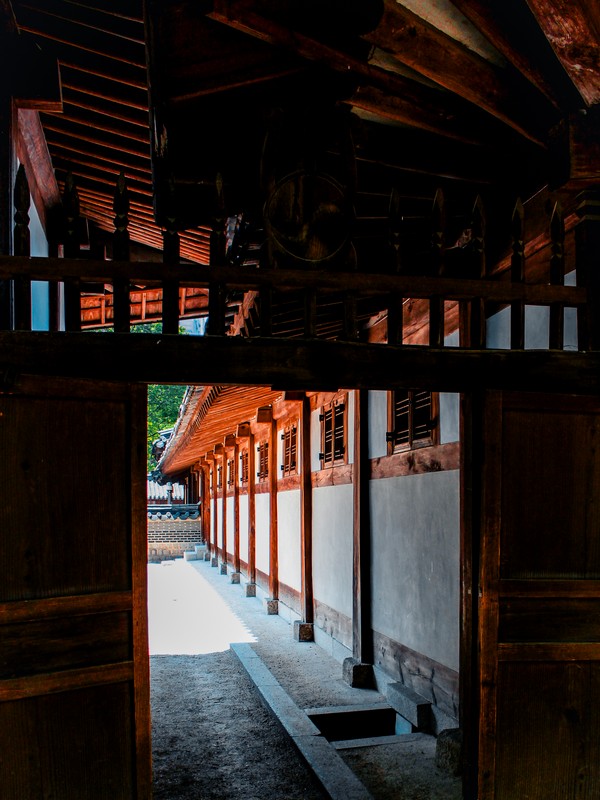
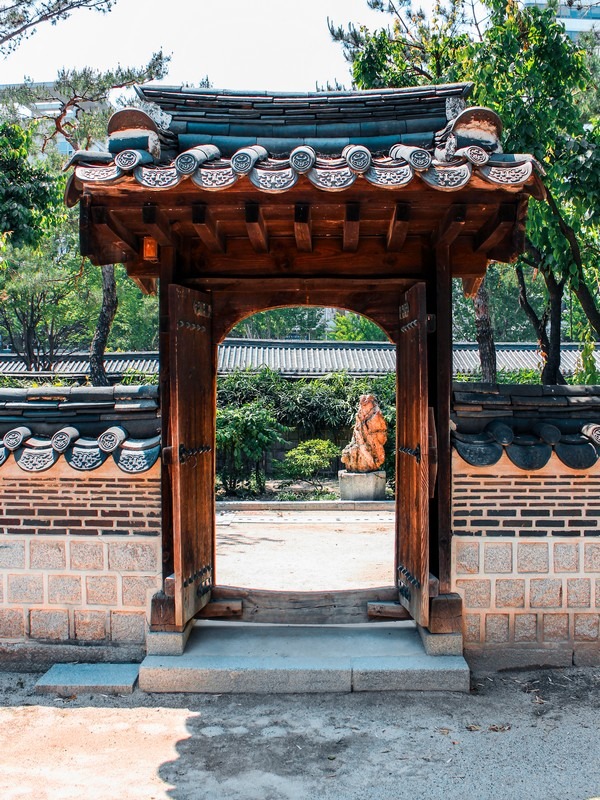
The signature buildings to see now are the Norakdang and the Noandang. Norakdang is the central building which was used for family feasts and birthday parties. Noandang was where Daewongun was exiled to. The name Noandang came from the Confucian passage: ‘Noja rests peacefully here’. This passage suggests how powerful Daewongu was when Norakdang and Noandang were built.
You can see where the royal ancestors are buried if you go to Seooreung Royal Tombs in the northwest of Seoul. But that’s a whole other trip to make.
What To See and Do
This palace is quaint and not nearly as colorful as the others. The wood has not been painted the colorful hues of green, red and yellows like the grander palaces, Changdeokgung Palace for example, but that means this one is just a little different and just a little special that way.
Each palace and royal residence really is different in some way and that’s why, if you have time, you should really visit them all and get something out of it. Deoksugung Palace, for example, is extremely unique in that it features buildings of various architectural styles. Don’t you want to see them all now?
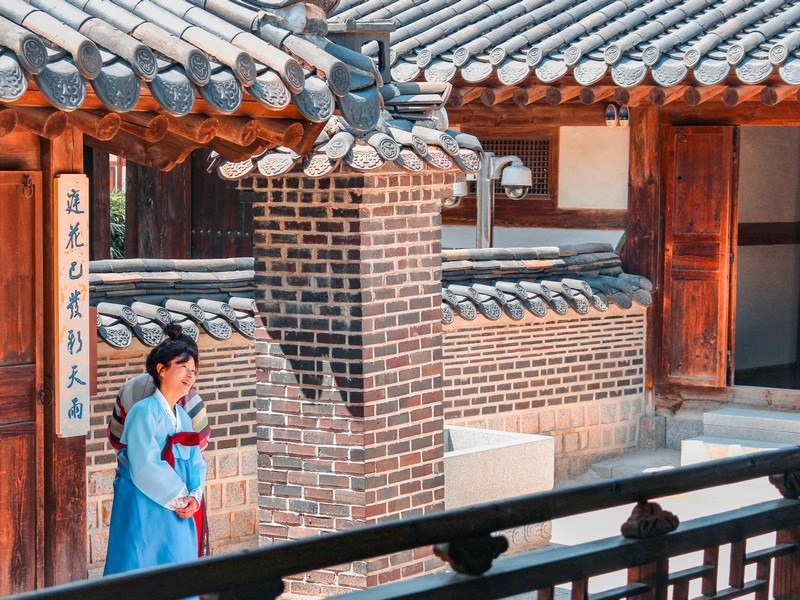
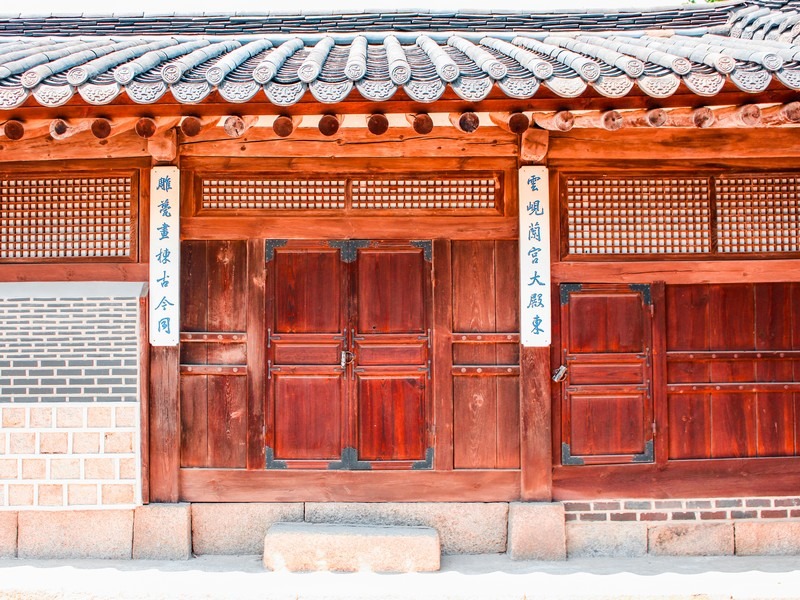
This royal residence tends to be much quieter and devoid of major tourist groups though you will find families taking their dol photos. Unhyeongung tends to be a popular spot for locals to take traditional photos celebrating the first birthday of their child and is really one of the best spots in the area in my opinion to take some gorgeous photos in a Hanbok.
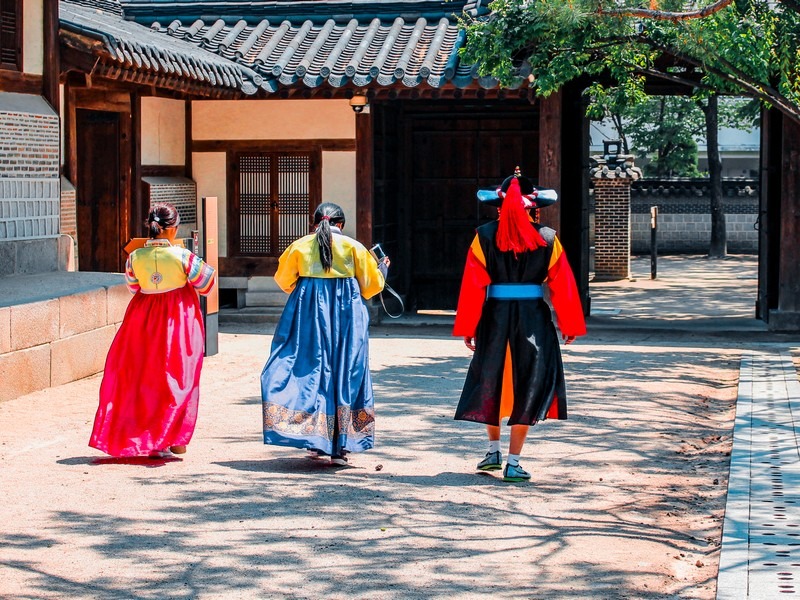
Where to rent Hanboks near Unhyeongung Royal Residence
If you want to rent a Hanbok while you’re in the area, head to Hanboknam that has tons of colorful pieces and plenty of gorgeous male and female pieces to choose from.
What To See Nearby
If you’re in this area, definitely start here, and then head into the Bukchon Hanok Village. There are amazing views to be had and Hanok house, traditional houses, with cafes and restaurants inside too. From here, you could also easily head into the very popular Ikseon-dong district. This is becoming increasingly popular with the younger people and is a popular spot for people to rent retro Korean clothing and waltz around in 40s clothing. If you want to get around the area in a bit different fashion, definitely check out the Seoul Pedicab tours. They’re a great an easy way to see the whole area.
The halls that exist today make for beautiful backdrops for some photos in Korea. Making it even easier to get some good shots, there is a Hanbok rental stand just inside the entrance with a very minimal fee of just around W3,000. You can rent Hanboks and walk around the area taking some beautiful photos without a bunch of people mulling around in the background.
Did you like this post? Pin It!
